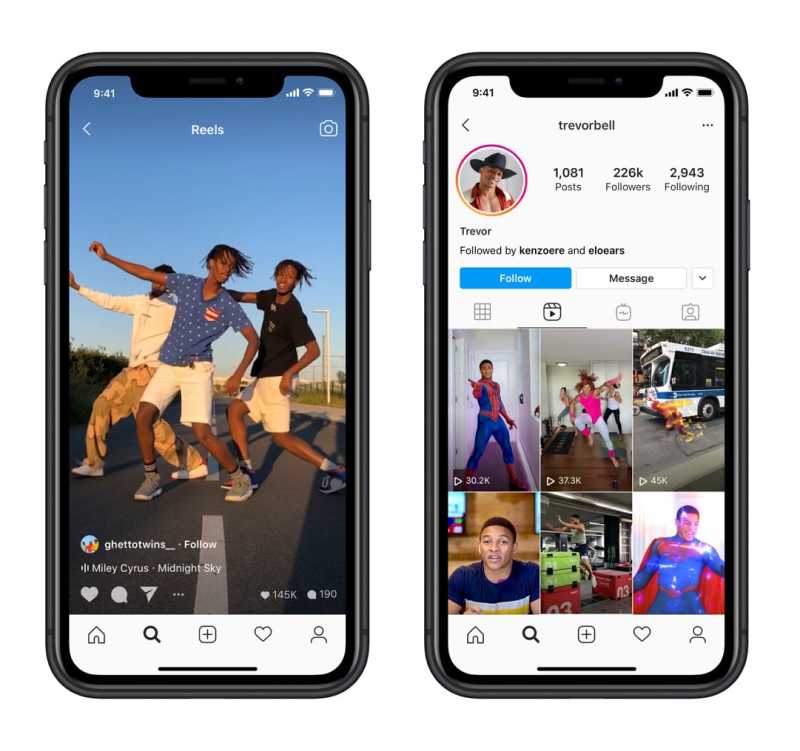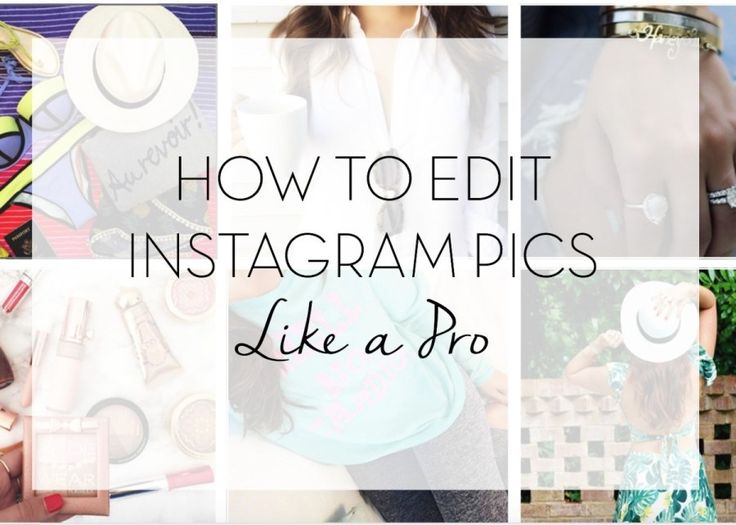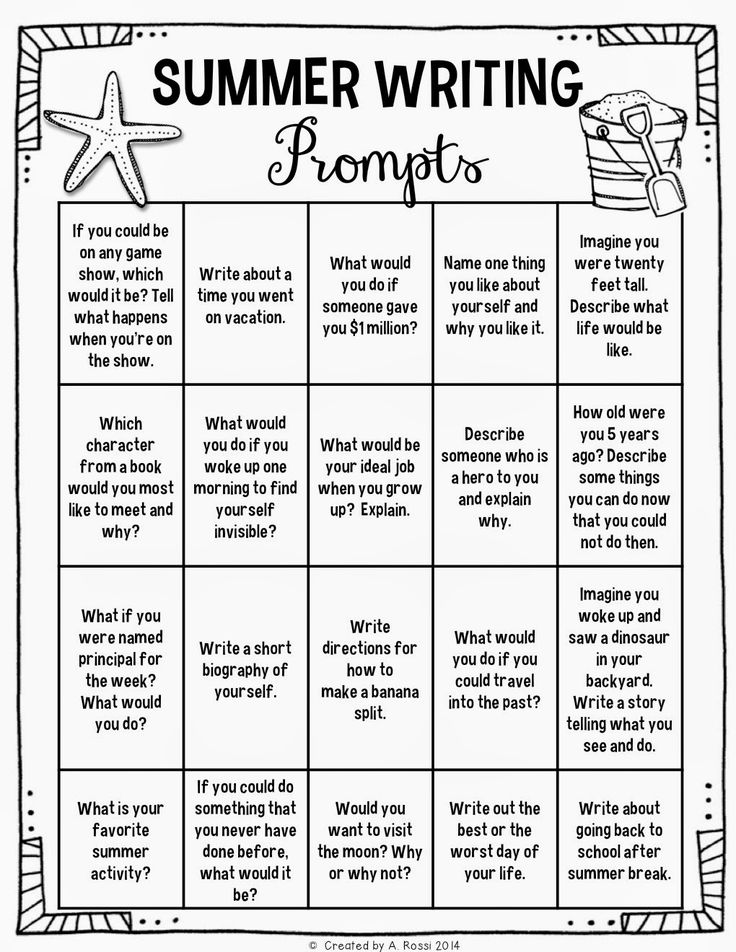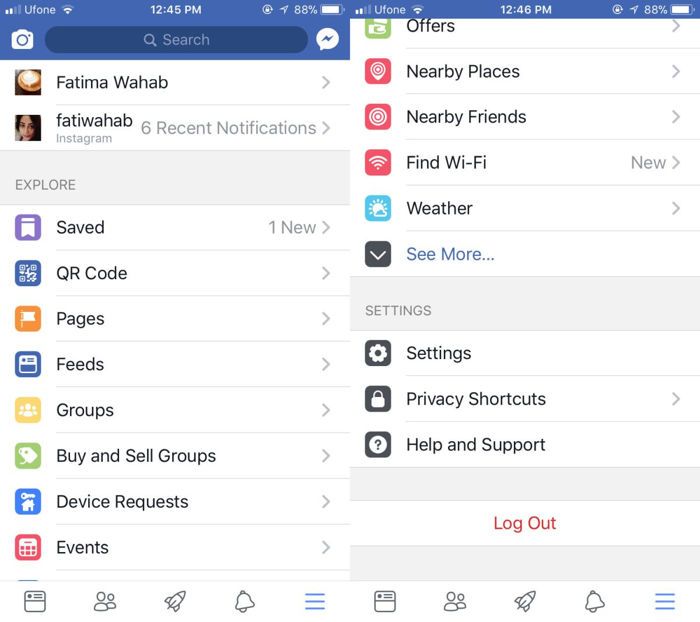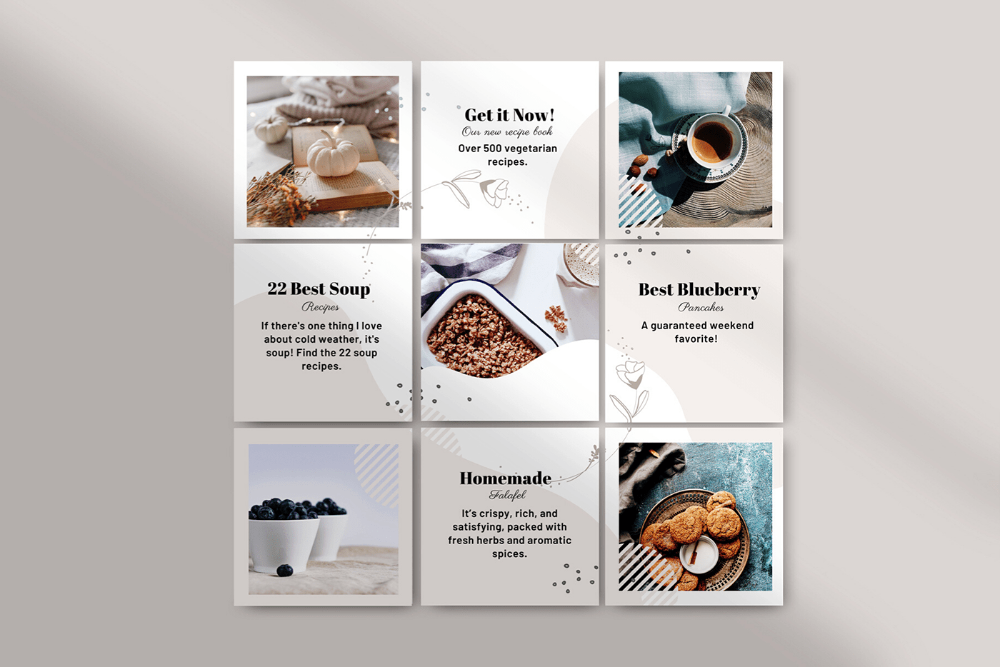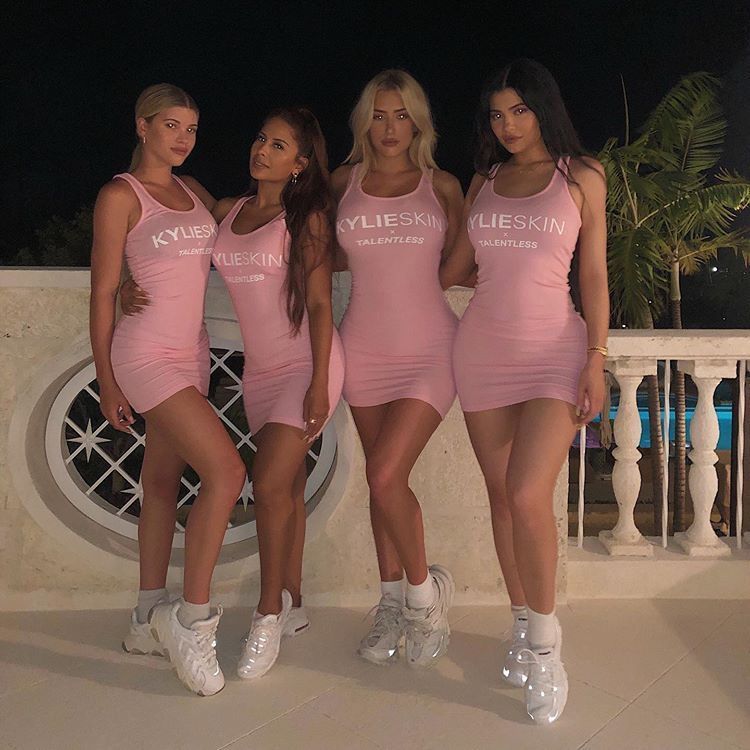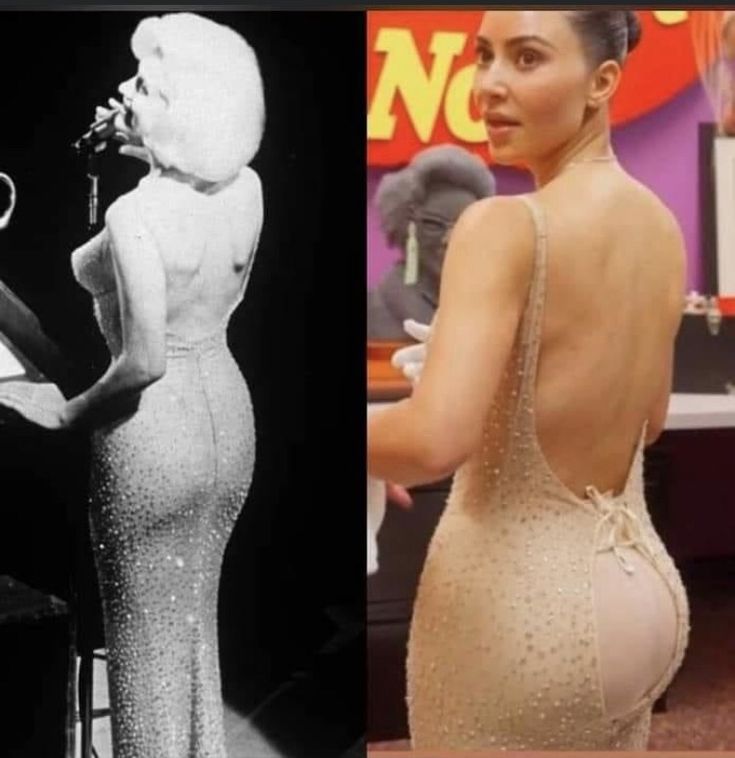How to get your video sponsored on instagram
Everything You Need to Know in 2022
With about 1 billion monthly active users, Instagram is an excellent platform to engage with your audience and tell them more about your business. And it’s not just because of the sheer size of the platform’s userbase — people engage with brands on Instagram 10x more than they do on Facebook.
A fun and effective way for brands and marketers to expand their reach and tap into new engaged audiences is through Instagram sponsored posts.
In this article, we discuss what Instagram sponsored posts are, how to get paid sponsorship opportunities, how much Instagram sponsored posts cost — and more! Let’s get to it.
Free download: Professionally designed, fully customizable Instagram ad templates. Click and get them now!
What is an Instagram sponsored post?
An Instagram sponsored post is a type of ad. The person (or business) posting a sponsored post puts a budget behind it to reach a wider audience.
There are two different kinds of sponsored posts: those that brands pay Instagram for (a.k.a. promoted posts), and those that brands pay influencers for (paid sponsorships).
- Promoted posts, boosted posts, and Instagram advertising: Just like the other major social media platforms (Facebook, Twitter, LinkedIn, etc.), Instagram has a native ad management tool. Brands can use it to create custom target audiences based on age, gender, interests, and location and serve sponsored content to these custom audiences.
- Paid sponsorships: This is when a brand pays a user to promote them via Instagram posts. Typically, this user (or influencer) has a personal brand and an engaged follower base of their own. When an influencer finds a brand in their niche that wants to sponsor them, they can charge a certain amount of money to create an organic post that features the brand’s products or services. This way, the influencer exposes the brand to an audience it might not otherwise have had access to.
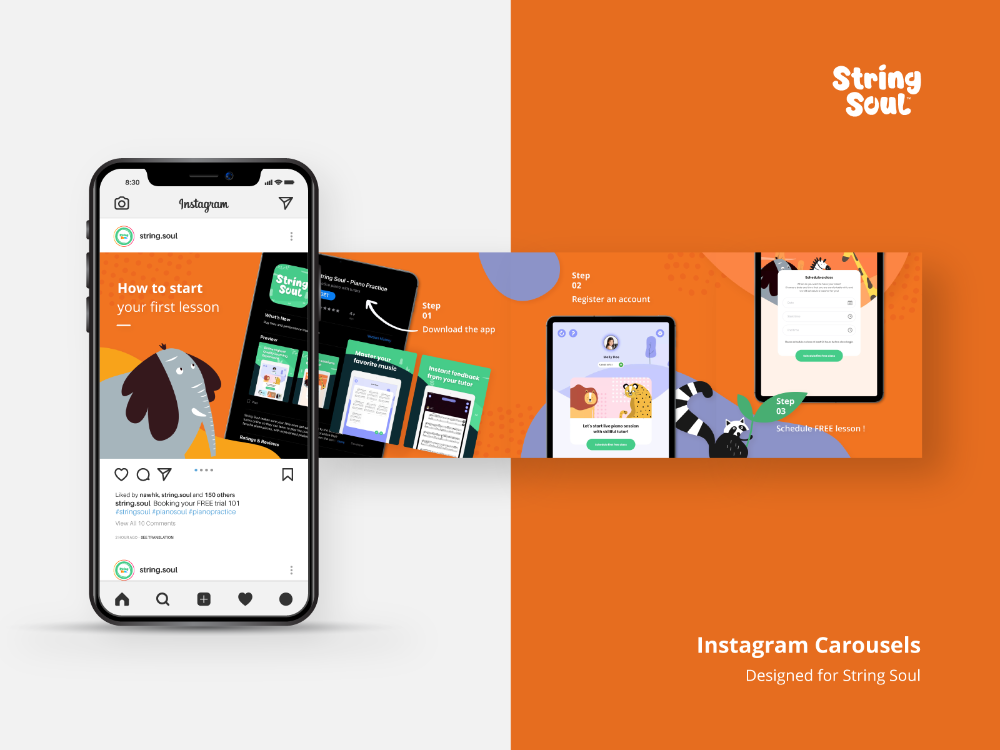
In this post, we’re focusing on paid sponsorships—the kind where a brand pays an influencer to promote their products and services.
As influencer marketing became an established, valuable area of digital marketing in the last few years, influencers were not being transparent about their partnerships with brands. To reduce this, Instagram put out its branded content features, which allows influencers to tag the brands they’re partnering with on the platform.
What do Instagram sponsored posts look like?
Have you come across posts like this on the Instagram app?
This is an Instagram sponsored post. Paid sponsorship posts like this are usually indicated with a “paid partnership with [brand name]” tag that comes immediately after the user name.
Posts like this give the brands access to the organic insights of posts that they’re tagged in. They can see the date the post went live, the reach, and the engagement the post got.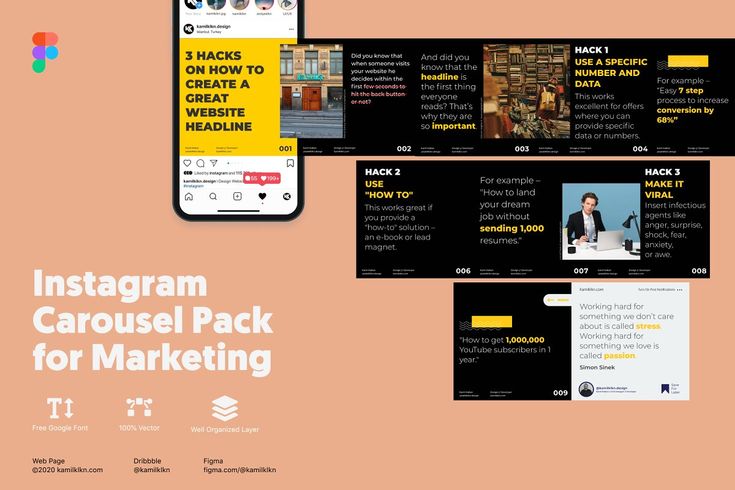 This data can help brands decide which partnerships bring the most return on investment (ROI).
This data can help brands decide which partnerships bring the most return on investment (ROI).
If you are an influencer, you must disclose all your sponsored posts. Not only does it prevent Instagram from taking down your posts, it also keeps you in the good graces of the Federal Trade Commission (FTC). The FTC demands that influencers disclose sponsored posts to protect all parties involved from potential fines or liability.
The transparency that comes with disclosing paid sponsorships also fosters trust between the brand and influencer.
How to get a sponsored post on Instagram
If you want brands to sponsor your Instagram posts, here are some steps you should take:
1. Define your niche and brand
The best way to get brands to notice you is if you post content in their niche. Choosing a niche helps you figure out the kinds of content to create and the sort of audience you want your posts to reach. There are many Instagram niches you can focus on including:
- Food
- Fitness
- Health and wellness
- Beauty and fashion
- Sports
- Technology, etc.
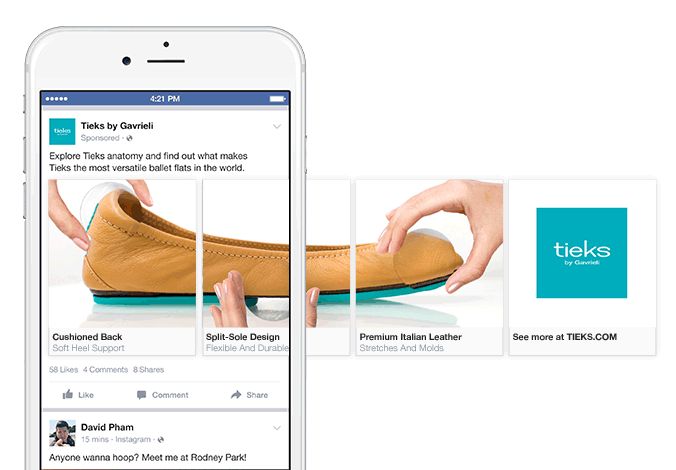
Whatever niche you choose, you need to define your brand.
Personal branding refers to your overall aesthetic. What colors do you want to use for your posts? What’s your brand messaging? What do you want your feed to look like?
As you try to answer these questions, bear in mind that good influencers have unique posts. Their posts are so distinguishable that an Instagram user can easily recognize the influencer’s posts even when another account shares it. As that user continues to see similar content from that influencer, they’ll grow to view the influencer as an expert in their field.
Pro-tip: In addition to making your Instagram feed cohesive and eye-catching, you can also create a website or online store that has the same aesthetic and messaging as your IG feed. If you choose to create a website, make sure to buy a custom domain name consistent with your brand and connect it to a CMS like HubSpot. This will help you keep your website secure and easily customize your site to match your brand.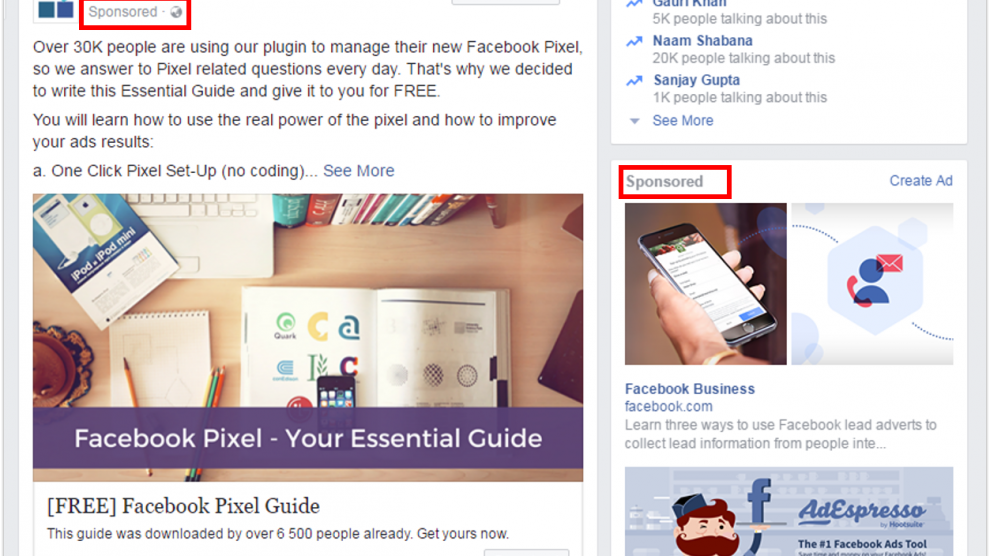
2. Understand your audience
If you understand your audience, you’ll be able to know if you’re a good fit for a brand. You’ll also be able to identify which brands will benefit greatly if they partner with you.
To know your audience, start by gathering data on your demographic of choice: their age, gender, geographic location, and interests. What kinds of post do they engage with most? What times of day are they online?
The information you gather will help you convince brands to partner with you. You’ll be able to explain to potential sponsors the kind of audience they can reach if they work with you.
Telling brands that they’ll reach an audience of middle-aged men, primarily from California, who use Instagram after work hours and prefer fitness content is more effective than simply saying: “You’ll reach men.”. You’ll also be able to explain to them the kind of audience they’ll reach if they work with you.
Explaining that a brand will be able to reach middle-aged men, primarily from California who often use Instagram after work hours and prefers fitness content is more powerful than saying, “You’ll be reaching men.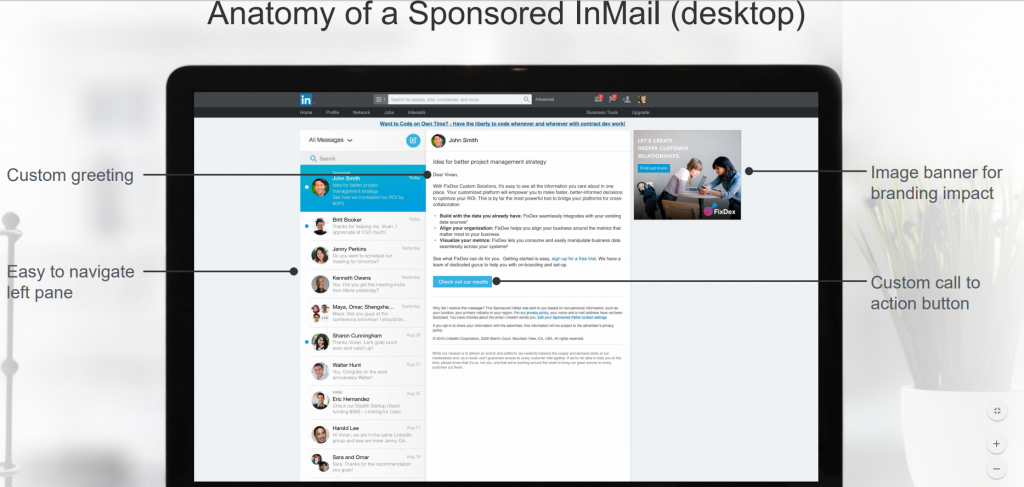 ”
”
3. Post consistently
The frequency at which you post content on Instagram is just as important as the quality of content you post. We found that posting once a day is a good enough frequency to grow your Instagram account. We also found that 11 am on Wednesdays is the best time to post on Instagram.
Posting every day (or every business day, at least) is important because Instagram’s algorithms favor fresh content, and you want to keep yourself at the top of your audience’s mind so that they won’t unfollow or forget about you.
But you need to figure out what frequency and times work best for you and your audience. If your audience doesn’t engage well with your posts on Wednesdays, post at a different time that they’re online. It takes trials and errors, but with time, you’ll eventually figure it out.
4. Use hashtags
Hashtags are a great way to make your content more discoverable. Instagram allows you to use up to 30 hashtags per post, but using that much doesn’t guarantee optimal engagement.
The trick to using hashtags properly is to use hashtags that are relevant to your content. Those hashtags also need to be niche.
For instance, #interiordecor has 16,700,000 posts, while #interiordecorideas has only 50,000 posts. The more niche the hashtag is, the easier it will be for your posts to get discovered.
Pro-tip: You should also use geotags as they help brands find you if they want to reach an audience in a specific location. For instance, if a jewelry store notices that you often post fashion tops from the New York area, and they want to reach people in that region, they’re more likely to work with you than with someone else who isn’t in New York.
5. Tag brands in your Instagram posts
Now that you’ve defined your niche and brand, and you’ve posted some high-quality content, you’re ready to start working with brands.
First, start small. If your niche is fashion, don’t go straight to Vogue or Armani. Instead, try to tag all fashion brands you’ve seen on Instagram already. Buy their products and tag them when you post images of yourself rocking those products.
Buy their products and tag them when you post images of yourself rocking those products.
Take @its_priscy, a brand influencer, for example. She posted this image of herself wearing a wig by Cassie Hair. The image has a great resolution and fits with her brand. She also tags @cassie_hair in her description.
Even if you’re not paid by the brand, tagging them will put you on their radar.
6. Include your contact info in your bio
Your Instagram bio is the best way to show brands that you want to become an influencer. Adding your website, email address, or even a press kit makes it easy for potential sponsors to contact you about partnerships.
For instance, @t0nit0ne adds her website and email to her Instagram profile. This makes it easy for brands to contact her for paid sponsorship opportunities.
Pro-tip: If you have a website or blog, try adding a Press Page to your site so that brands can know what you offer.
Once you start working with brands, you can add them to your Press Page to showcase your experience and professionalism.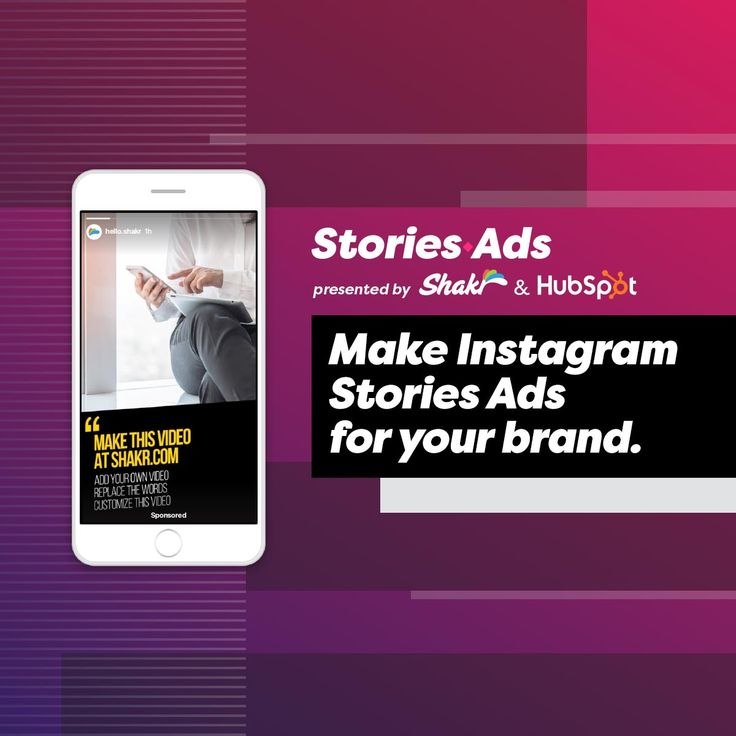
7. Pitch paid sponsorships
You can’t sit around and wait for sponsorship offers to fall in your laps. You have to actively look for them. Reach out to brands and offer your services to them. If you have the right pitch, you might be able to get gigs without waiting for brands to find you first.
Before pitching brands, try to find brands that clearly spend time and money on their Instagram account. A good telltale sign of this is if they run a lot of Instagram ads. Then, research similar influencers in your industry that sponsor these brands.
Once you have your list of potential partners, send these brands a pitch. In your email, clearly tell them who you are, what you do, and your achievements as an influencer (if you have any). Then explain why you’re the right influencer for that brand, and include your follower count and average engagement rate.
You can also send the brand a DM straight from Instagram, but it might get lost if the brand gets a lot of DMs every day.
Note: It’s better to pitch smaller brands first before moving on to bigger ones. This gives you a better chance of getting gigs and will allow you to build a portfolio.
8. Charge what you’re worth
When brands reach out to you for a partnership, know how much you’ll charge them. There’s an industry standard depending on how many followers you have (we’ll cover that shortly), but your prices could vary depending on how much engagement you get on your posts.
You should also know how to use Instagram’s many features to create a good deal. For instance, for $500, you could make six Instagram Story posts and put a link to their website in your bio for, say, a day.
Once your pricing structure is set, you’ll understand exactly how to sponsor posts for brands that you’re working with.
How to sponsor a post on Instagram
If you’re a brand looking to work with an Instagram influencer, here’s what to do.
First, you need to reach out directly to the influencer.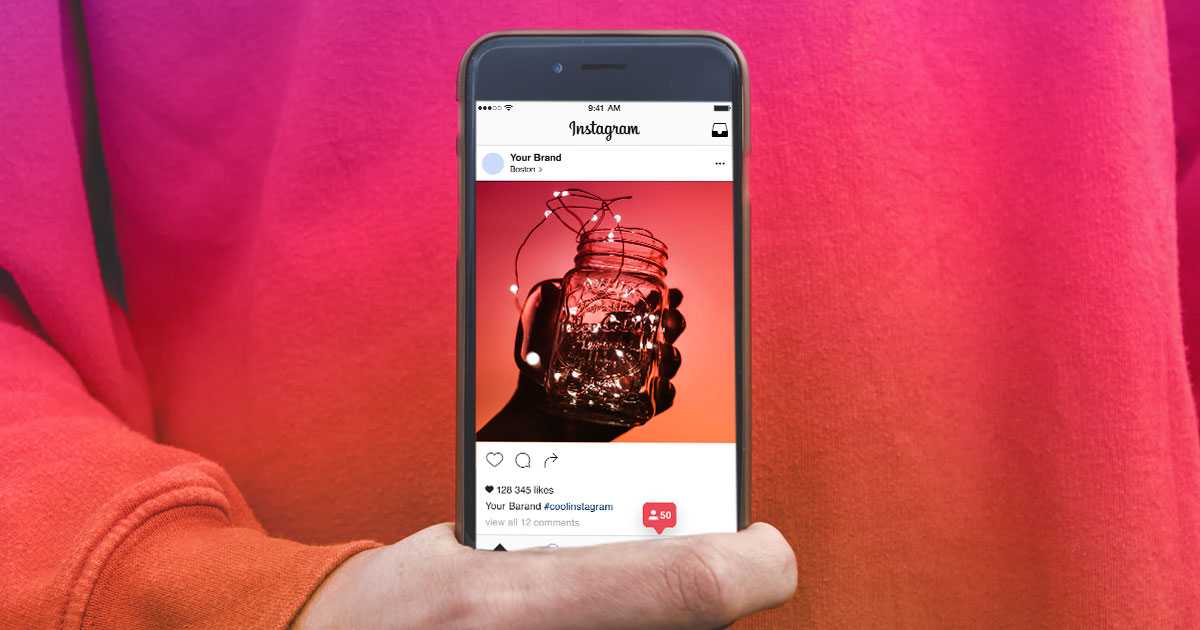 You can email them or send them DMs to ask about paid sponsorship opportunities. Some influencers will ask for payment upfront, while others (usually smaller influencers) will accept free product samples as payment for sponsored posts.
You can email them or send them DMs to ask about paid sponsorship opportunities. Some influencers will ask for payment upfront, while others (usually smaller influencers) will accept free product samples as payment for sponsored posts.
Once you and the influencer have worked out the scope of the sponsorship and sorted out payment, you can start setting up the branded sponsorship on Instagram.
Here’s how to do this:
- Go to Settings and find Business.
- Then, click on Brand content.
- Click on Approved Business Partners to add the influencer’s account as a partner.
You can also approve all tags manually so that you’ll be able to accept the sponsored tag before it goes live. This way, you can monitor content and make sure the influencer is posting what you need.
Once your partner tags you in their post, you’ll get a notification with an option to approve. When you approve the tag, the post will show up in your Insights and you can monitor it from there.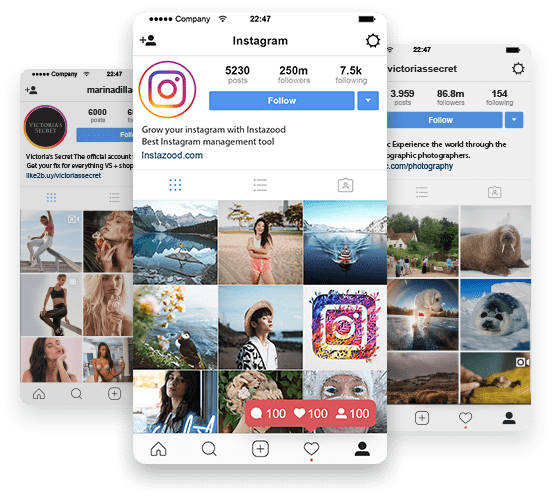
If you want to delete a sponsored post on Instagram, you can just remove the tag from the post. Or you can choose not to approve it from the get-go.
How to create a sponsored post on Instagram
Now, let’s look at things from the influencer’s end.
To create a sponsored post on Instagram, you need to set up a branded sponsorship with the business. You can only make a post after the brand has added them as a partner (see steps above).
When creating the post, it’s important to follow the brand’s guidelines (if they gave you any). You can also run the post by the brand first (both visuals and copy) to ensure that they’re okay with it.
When you want to upload a sponsored post on Instagram, start by uploading the post, Story, or Reel as you normally would. For Feed content, go to Advanced Settings and select Tag Business Partner. This enables you to tag the brand so that they can approve the post before it goes live.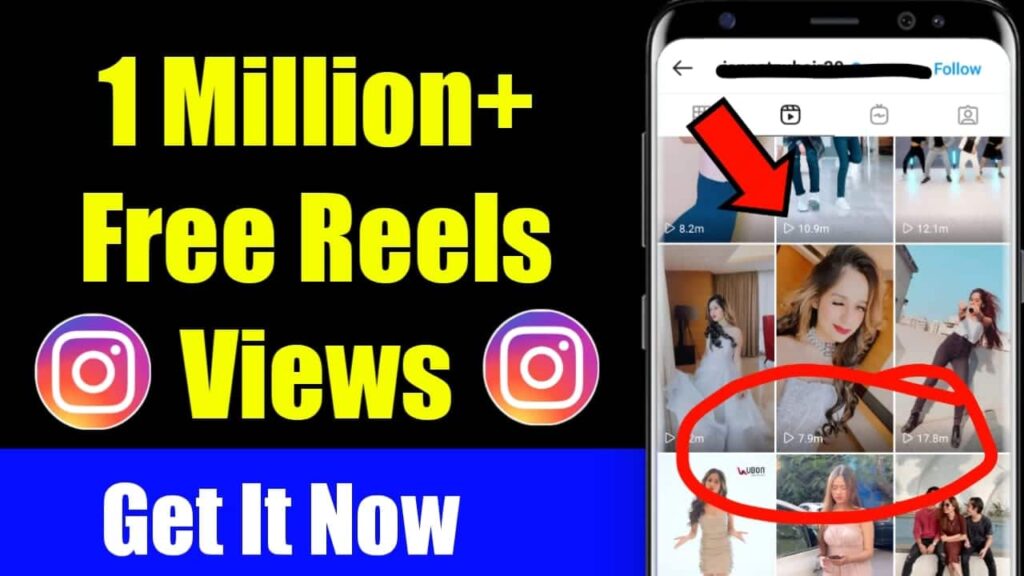
For Stories, you’ll follow the exact same steps. The only difference is that you’ll have to click on the link on the icon toolbar so that you can tag the brand.
How much do Instagram sponsored posts cost?
As mentioned earlier, the amount of money to charge for your services varies depending on your follower size, influencer’s status, and industry. Someone who has 1 million followers, an engaged audience, and a reputation as an expert can (and should) charge much more than a blogger with 5K followers.
According to Influencer Agency, you can charge these price ranges based on follower count:
- $800-1500 for 25 – 50K followers
- $1500-2000 for 50 – 100K followers
- $2000-6000 for 100 – 150K followers
- $6000-10000 for 250K – 1M followers
- $10000+ for 1M+ followers
These are just estimates, though. If you’re a brand, the best way to find out how much you should pay for a sponsored post is to directly email the influencers you want to work with.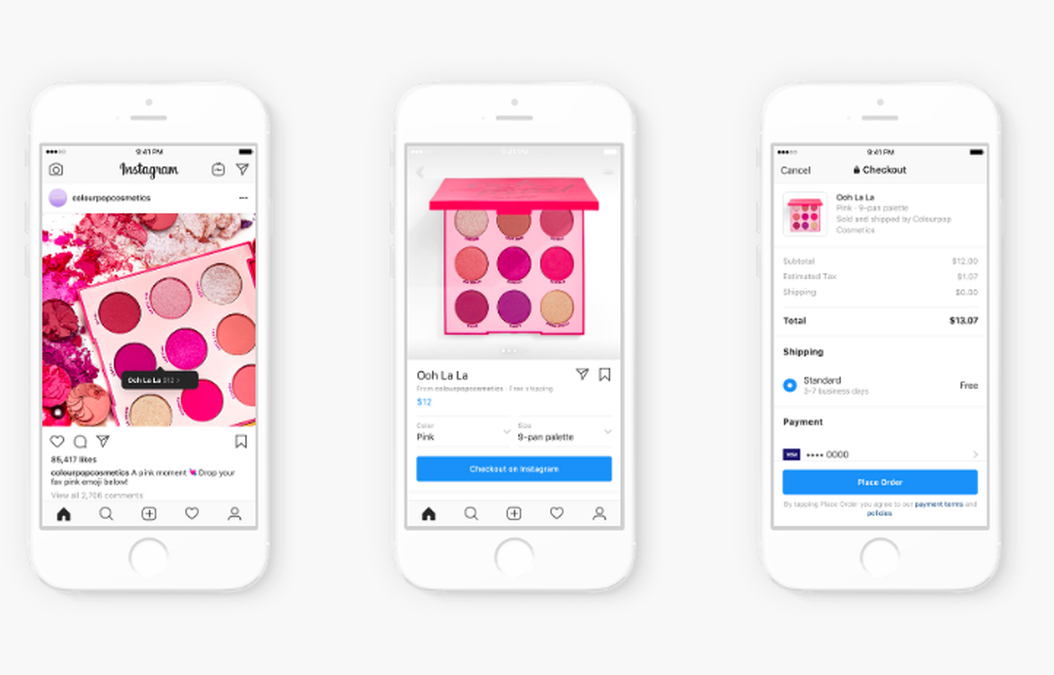
How to create Instagram sponsored posts in Facebook Ads Manager
With Facebook Ads Manager, business partners can promote branded content even if they didn’t create it. To do this as a brand, you need to create a new ad in Ads Manager and choose your objective. Then, click Use Post at the top right corner of your screen.
Once you select that, you’ll be able to see all the existing content you can use, including posts that business partners have given you permission to use. After creating your ad, submit it. This way, your content can receive a larger audience than it would have if it was organic.
Now that you know what Instagram sponsored posts are, how to attract brands to sponsor you, and how to create sponsored posts, it’s time for you to start reaching out to brands (if you’re an influencer) and influencers (if you’re a brand).
How to Get Sponsored on Instagram (Even if You Currently Have 0 Followers)
It's no surprise you want to become a paid Instagram influencer -- heck, the average price for a sponsored Instagram post is $300, and if you become more successful, like yogi Rachel Brathen, you could be making $25,000 per post.
But the idea of getting your posts sponsored might seem laughable to you. You're not posting pictures skydiving in Australia -- you're posting pictures of your brunch. However, you could be more marketable than you think.
Instagram has become an insanely popular channel for brands to promote their products. In fact, Influencer Central found consumers consider Instagram to be the sixth most effective at influencing their purchasing decisions.
Instagram's popularity might make you feel the platform is already too crowded for you to stand out. But here's the thing -- brands are quickly realizing the power of normal people to promote their products. Micro-influencers, or people with a small number of followers compared to the big players, see the most engagement out of their audience.
Think of it this way: I'm going to trust my best friend's advice over Kim Kardashian's when I'm purchasing a product. I trust my best friend, we share similar interests, and I know she's genuine with her advice (no offense, Kim … ).
It's the same concept for micro-influencers -- with the right strategy, your audience will begin to see you as one of their real friends. The more they trust your advice when seeking out purchasing decisions, the more likely you are to get sponsored.
Here, we're going to show you everything you need to do to get sponsored on Instagram, even if you currently have zero followers. Keep reading to get started or click the links below to jump to a specific section of this article.
- How to Get Sponsored on Instagram
- What's a Sponsored Instagram Post?
- Using #ad and #spon Hashtags
How to Get Sponsored on Instagram
- Define your brand.
- Know your audience.
- Post consistently.
- Use hashtags and geotags.
- Tag brands in your posts.
- Include contact information in your bio.
- Pitch paid sponsorships.
- Know your worth.
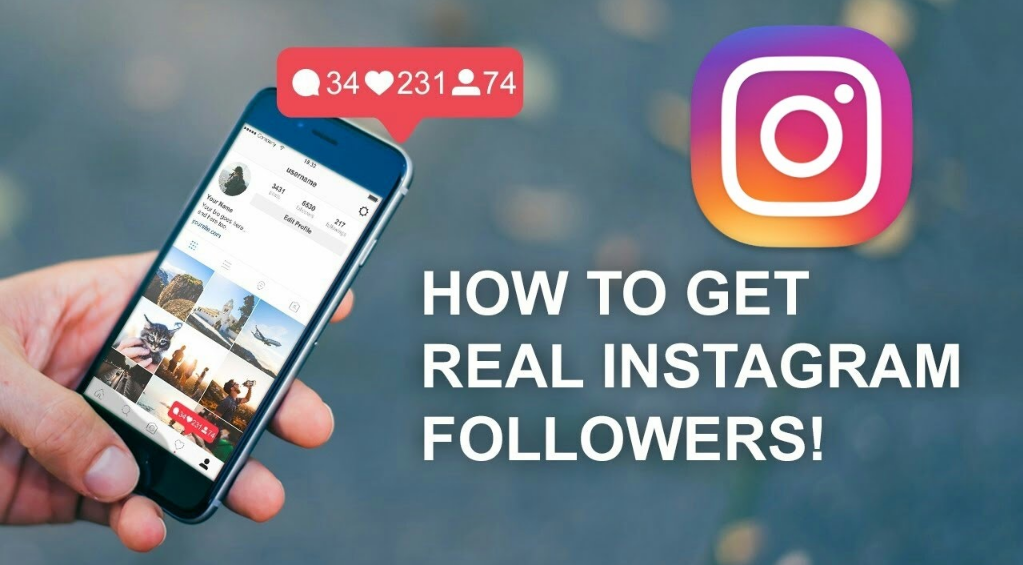
1. Define your brand.
You'll see the best engagement if you're able to define your niche. Do you want to post food and health related content, or focus on fashion? Whatever the case, it's important to establish your brand.
Besides the type of content you post, branding has a lot to do with your overall aesthetic. How do you want to style your posts? What's your messaging? To further solidify your brand, you might want to consider creating a cohesive feed theme (use these feeds for inspiration).
Specificity is key. A good influencer's posts are distinguishable and unique -- when a user is flipping through her feed, she'll be able to pause and recognize every time she sees a post from that influencer. As she continues to see similar content, she'll grow to trust that brand as an expert in the field. If the influencer suddenly and randomly changed course, the user might not understand or trust the content anymore.
Additionally, you might want to connect your Instagram brand with an online presence.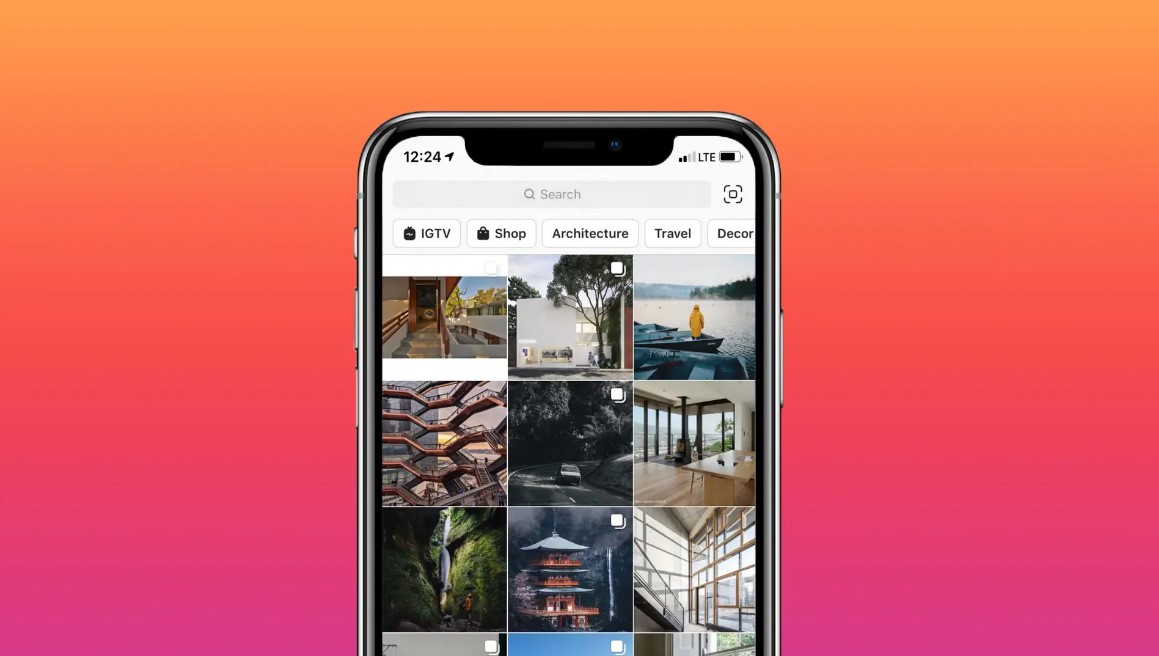 Creating a website with similar aesthetic and messaging is a good way to do this -- the more you unify your social media accounts, the easier it will be for brands to distinguish how you can help them.
Creating a website with similar aesthetic and messaging is a good way to do this -- the more you unify your social media accounts, the easier it will be for brands to distinguish how you can help them.
2. Know your audience.
Knowing your audience is critical for convincing a brand to work with you. It's mutually beneficial for you, as well -- if you understand your audience, you're able to correctly identify which brands will see the most success from using you as their sponsor.
Start by gathering the basics -- what is the gender, age, and geographical location of your core demographic? Which of your posts do they like the best? What times of day do they respond best to content, and what can you infer from this?
The demographic information you gather will help you pitch partnerships with brands. Brands want to know who they can reach if they work with you. Explaining "You'll be reaching thirty-something, working women, primarily from New York, who often use Instagram first thing in the morning and prefer fitness content" is certainly more powerful than saying, "You'll be reaching women. "
"
3. Post consistently.
CoSchedule gathered research from 14 studies to identity how often you should post on social media sites. For Instagram, they found you should post a minimum of once a day, but can post upwards of three times a day.
CoSchedule also found 8:00 AM to 9:00 AM, and 2:00 AM, are the best times to post.
To grow your following, it's critical you post at least once a day. Instagram's algorithm favors new and fresh content, and you don't want your audience to unfollow you or forget about you from lack of consistency.
However, you'll need to figure out what works best for you and your audience. Perhaps your audience feels bombarded when you post three times a day, or maybe they prefer it. Maybe your audience engages most with your posts at noon. It will take some trial and error, as well as Instagram metrics tools, to figure this out.
Featured Resource
Instagram for Business Tips + Templates
Fill out the form to access your kit.
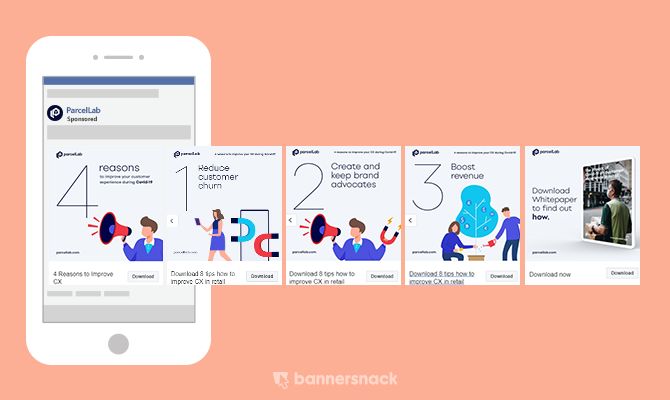
4. Use hashtags and geotags.
Hashtags make your content more discoverable, so they're necessary for growing your following. You can use up to 30 hashtags per post, but TrackMaven found nine to be the optimal number for boosting engagement.
You'll want to use hashtags as relevant to your content as possible. You'll also need to check to make sure the hashtags you use aren't broken or banned (take a look at this list of banned hashtags if you're unsure).
It's critical you choose hashtags that aren't too broad. #Healthyliving, for instance, has over 20,000,000 posts, while #healthylivingtips only has 13,000. The less competition, the easier it will be for your content to get discovered.
When you peruse a hashtag's page, you can also get a deeper sense of what types of content your post will be up against. #Healthylivingtips might typically feature posts with food recipes, while your post is about cycling -- this could defer you from using that hashtag.
Geotags are equally important, but for a different reason.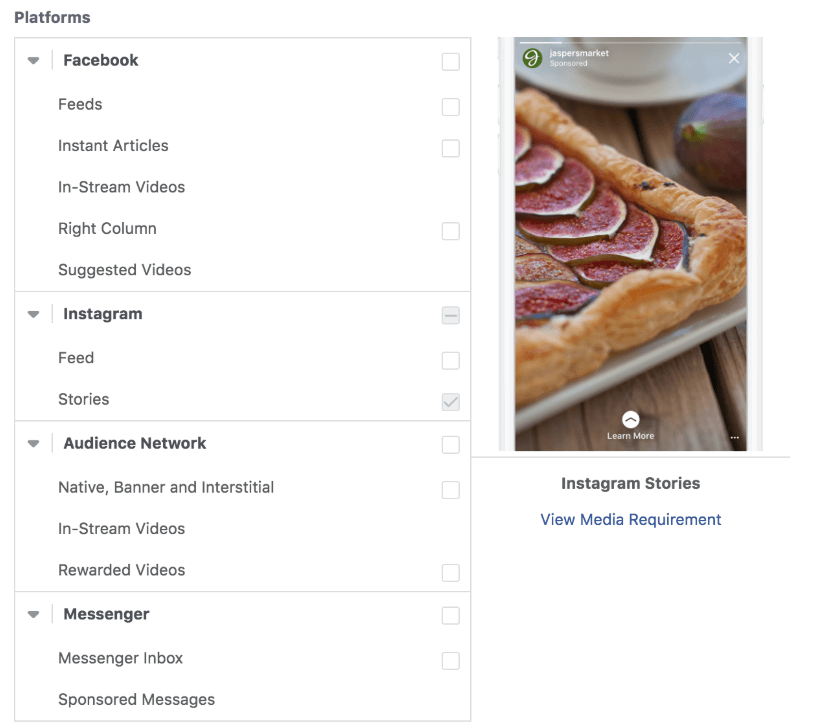 Geotags can help people find you if they're interested in a certain location. This helps you gain more followers, and it also helps you appeal to brands that are interested in reaching a certain demographic. For instance, maybe a boutique sees you often post fashion tips from the California area, and they're looking to appeal to people in that region -- it's a win, win.
Geotags can help people find you if they're interested in a certain location. This helps you gain more followers, and it also helps you appeal to brands that are interested in reaching a certain demographic. For instance, maybe a boutique sees you often post fashion tips from the California area, and they're looking to appeal to people in that region -- it's a win, win.
5. Tag brands in your posts.
Okay, now you're officially ready to begin reaching out to brands. You've defined your brand and audience and have created some quality, authentic posts. Now, you should have a pretty good idea what types of businesses would benefit from a partnership with you.
It's important to start small. If you're interested in skincare, don't go straight for Estee Lauder -- instead, try tagging small skincare start-ups you've seen across Instagram already.
Let's take a look at an example -- @Tzibirita, a travel influencer, posted this image of herself wearing a Paul Hewitt watch. The image is high-quality and fits with her brand, and she tags @paul_hewitt in her description. Even if you're not paid by Paul Hewitt, you can still post the same type of content and tag their brand in the post. Ideally, it will at least put you on their radar.
The image is high-quality and fits with her brand, and she tags @paul_hewitt in her description. Even if you're not paid by Paul Hewitt, you can still post the same type of content and tag their brand in the post. Ideally, it will at least put you on their radar.
Begin with small brands and tag them in your descriptions. Engage with your audience by responding to comments like "Where can I get one?" or "How much?" and the brand will soon see you've proven yourself a suitable sales partner.
6. Include contact information in your bio.
Consider your bio a chance to signal to brands your interest in becoming an influencer. Include an email or website so they can reach you, and include a press kit if possible.
For instance, @tzibirita doesn't waste her bio space. She includes her email and website, and even adds a title -- "content creator". Brands will have no doubt she's open to doing business with them.
Furthermore, you should use a website or blog as your chance to expand on your brand and demonstrate your versatility. Consider adding a Press Page to your website, so brands can take a look at your services. Once you begin sponsoring brands, you can add them to this page so brands can see you have influencer experience.
Consider adding a Press Page to your website, so brands can take a look at your services. Once you begin sponsoring brands, you can add them to this page so brands can see you have influencer experience.
7. Pitch paid sponsorships.
There's nothing wrong with reaching out to brands and offering your services. With the right pitch, you might be able to land some gigs without waiting for brands to find you.
Look for brands that clearly invest time and money into their Instagram presence. You might start by researching what similar influencers in your industry already sponsor. Remember, it's okay to start small. Working with smaller brands will allow you to build a portfolio.
Once you've curated a list of brands that might want to partner with you, send them an email. In your pitch, clearly and briefly outline who you are, what you do, and any achievements you have in the field that make you an expert. Then, explain why you're a good fit for the brand, and include data such as follower count and average engagement rate.
Alternatively, you might consider sending a brand a DM straight from Instagram. It's certainly more relevant to the job you're vying for, but it might get lost if a brand get hundreds of DMs a day.
8. Know your worth.
Make sure you know how much you're going to charge when brands reach out to you. The industry standard is $10 for 1,000 followers, but it could also vary depending on how many likes you get per post. Additionally, as you grow, you'll be able to charge more.
While you'll want to have a minimum set, you can negotiate to encourage brands to pay more. Perhaps for $300, you'll throw in five Instagram Story posts, and a link in your bio to their website for 24 hours. You can use other Instagram features to sweeten the deal.
Once you have your pricing structure nailed down, you'll need to know how to sponsor a post on behalf of the brand you're working with. Now, keep in mind there are two different kinds of "sponsored" posts: those for which brands pay Instagram, and those for which brands pay another user.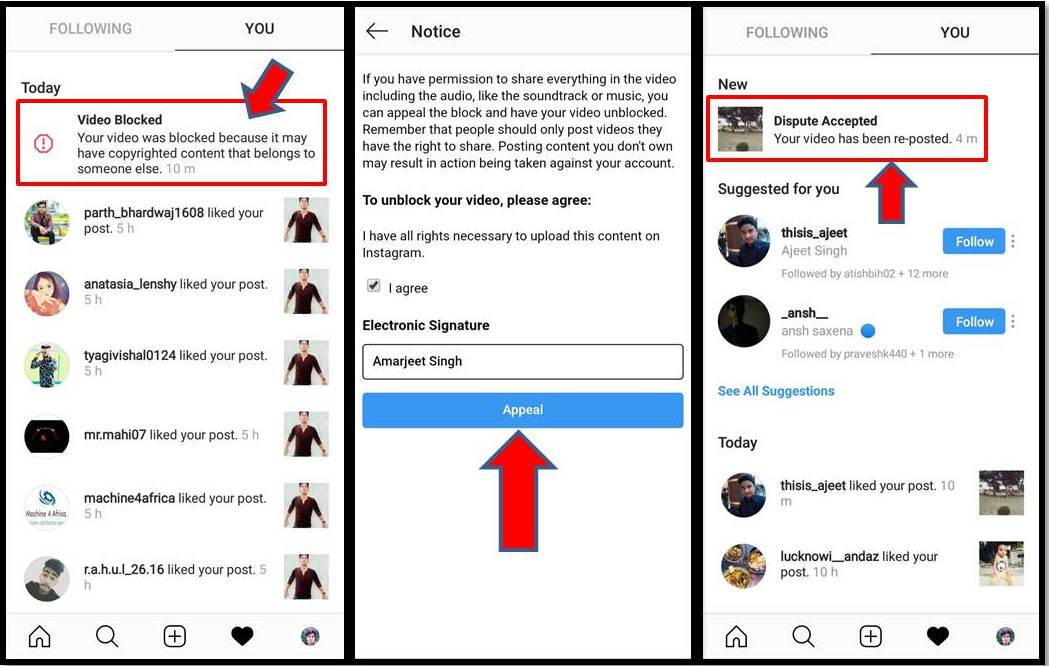
Confused? Here's what I mean:
What's a Sponsored Instagram Post?
A sponsored post on Instagram is paid for by the poster to reach a wider audience. There are two main types of sponsorships: In one, a brand creates a post and pays Instagram for access to a custom audience. In the other, a brand sponsors another Instagram user -- often called an "Influencer" -- who creates a post that features the brand in some way.
Here's more detail on each type of sponsored post:
Promoted Posts & Ads
Just like Twitter, LinkedIn, and Facebook, Instagram comes with a native ad management platform. Advertisers can use this tool to customize a target audience -- using attributes like age, sex, location, and interests -- and invest a specific amount of money to getting their post in front of Instagrammers who identify with this audience.
The thing to remember here is that the advertiser is making and publishing the post. They're paying Instagram for the audience they want access to, but the post is theirs to create.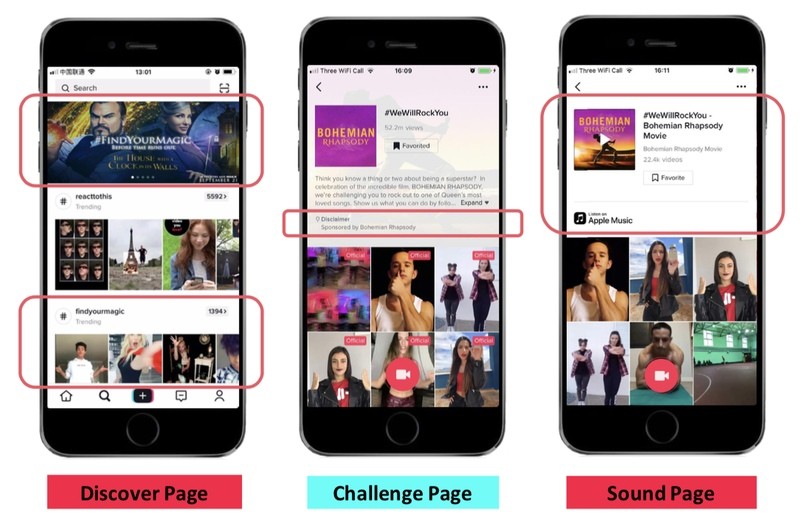
Paid Sponsorships
Paid sponsorships take place between a brand and another Instagram user. Typically, this user has a personal brand and attracts an audience of his or her own. This user is often called an "influencer."
This person can then use the steps explained earlier in this article to find and work with brands that appeal to a similar audience. When they find a brand who wants to sponsor them, they can charge this client a certain amount to create a post that features their product or service. Think of it like social media product placement; just like a business might pay a TV show to have their brand of soda on the countertop in the series finale, they can also pay a person on Instagram to hold that same soda in a picture on their Instagram feed.
Clearly there are more creative sponsorship ideas you can come up with -- I decided to go with a cliché ...
Influencers are similar to Instagram's ad manager in the sense that they both draw an audience that brands might not otherwise have access to.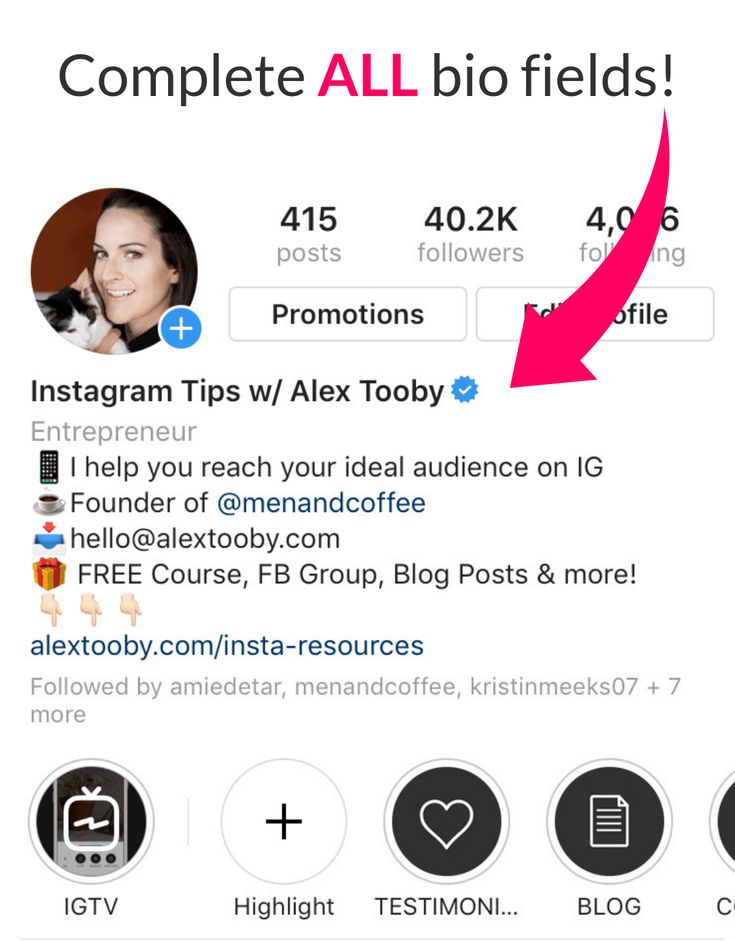 However, the differences in this type of sponsorship are that the brand is paying the influencer -- rather than Instagram -- for access to their audience, and the influencer -- rather than the advertiser -- is the one creating and publishing the post.
However, the differences in this type of sponsorship are that the brand is paying the influencer -- rather than Instagram -- for access to their audience, and the influencer -- rather than the advertiser -- is the one creating and publishing the post.
There are numerous influencers for each industry. Here's a big list of today's known influencers and the types of audiences they attract.
Using #ad and #spon Hashtags
In the past couple years, brands have come under fire for hiring influencers but not making it clear to the audience that these influencers were getting paid.
Department store Lord & Taylor, for instance, settled charges with the FTC in 2016 after paying 50 influencers to wear a dress in their posts without hashtagging #sponsorship or #ad.
Influencers are supposed to hashtag #ad or #sponsored in posts they're being paid for, but these tags make some brands uncomfortable because it makes the post appear inauthentic.
In 2017, Instagram released a paid partnership feature to combat this issue -- if you tag a brand in a post and the brand confirms the relationship, the ad will be marked at the top with a "paid partnership" label. This also helps the brand gather data regarding how well the campaign is performing.
This also helps the brand gather data regarding how well the campaign is performing.
It's critical your followers know if you're getting paid to promote a product. Ethics aside, it could destroy your account's credibility if you're caught, and lose everything you've worked hard to build -- namely, an authentic, trusting community.
If you truly don't want to post #ad or #spon, there are some ways around it -- for instance, Airbnb created the hashtag #Airbnb_partner, to signal a paid partnership without using the word "ad".
When in doubt, adhere to Instagram's policies. You can read Instagram's branded content policies in full here.
Ultimately, getting sponsored on Instagram isn't easy -- it takes time, effort, and perseverance. But if you work hard to differentiate yourself in the industry, and connect on a personal level with your followers, it can be extraordinarily rewarding.
Topics: Instagram Marketing
Don't forget to share this post!
How to record Reels video on Instagram?
Help Center
Instagram features
Sharing photos and videos
From July 2022, most videos will only be able to be shared using the Reels feature. These changes will not affect videos previously posted to the feed and posted to Instagram on the web.
These changes will not affect videos previously posted to the feed and posted to Instagram on the web.
The Reels feature is not yet available to everyone. Some account holders will be able to view Reels videos, but will not be able to shoot them.
Reels function allows you to shoot and edit 90 second Instagram videos. Reels videos can be overlaid with various effects and music, as well as use original audio tracks in them.
Video Recording Reels
Instagram app for Android
Tap the icon at the top of the screen or swipe right anywhere on the feed.
Scroll to the Reels option at the bottom of the screen.
Tap and hold to record a clip, or tap this icon to start recording and again to end. You can also click on the camera roll at the bottom left of the screen to add a video from it. nine0003
Press Preview.
Select Edit Clips to view, trim or delete your previous clip and click Done.
Tap the appropriate icon at the top of the screen to add stickers, pictures, and text to your Reels video. Click to download the video to your device. Use the slider at the bottom of the screen to choose when you want the text to appear on the video and click Next.
Click Edit Cover to edit the cover photo and add a caption. nine0003
Select Share or Share to Reels.
Instagram app for iPhone
Touch the icon at the top of the screen or swipe right anywhere on the feed.
Scroll to the Reels option at the bottom of the screen.
Tap and hold to record a clip, or tap this icon to start recording and again to end. You can also click on the camera roll at the bottom left of the screen to add a video from it. nine0003
Click Next in the lower right corner of the screen.
Select Edit Clips to view, trim or delete your previous clip.
Tap the appropriate icon at the top of the screen to add stickers, pictures, and text to your Reels video. Click to download the video to your device. Use the slider at the bottom of the screen to choose when you want the text to appear on the video and click Next.
Click Edit Cover to edit the cover photo and add a caption. nine0003
Select Share or Share to Reels.
Note. You can record one or more clips up to 60 seconds in total. The progress bar at the top of the screen will show the remaining recording time. If you post a Reels video in Explore, it will also be available in the Reels tab on your profile.
Interactive stickers such as "Poll", "Challenge", question sticker and others cannot be used in Reels videos. Learn more about saving and editing a Reels video draft. nine0003
Jobs
Terms of use
Privacy
What is Reels on Instagram and how to use it
At the beginning of July 2021, the Reels service appeared on Russian Instagram, which everyone considers a competitor to TikTok.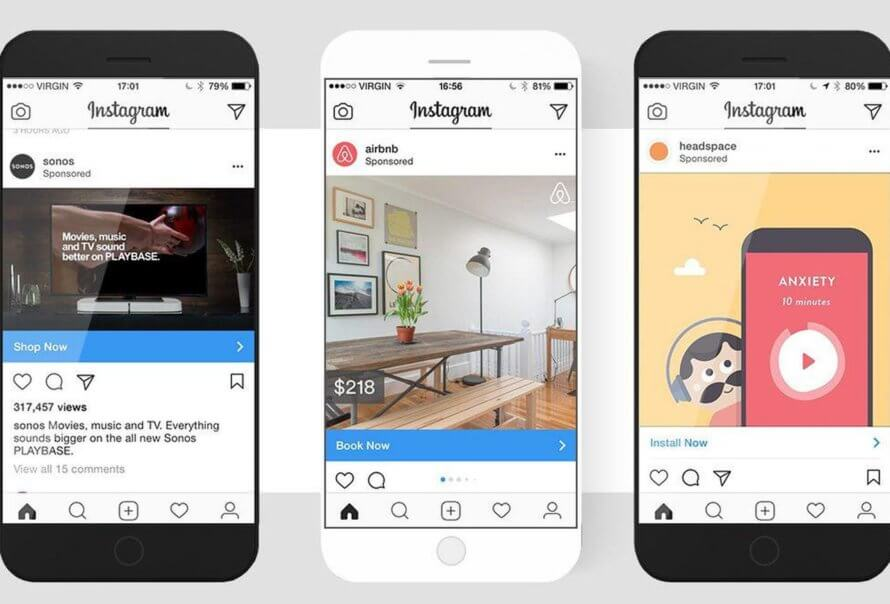 How can innovation be useful, and how can brands promote themselves with it?
How can innovation be useful, and how can brands promote themselves with it?
nine0090 Reels - what is this tool
Instagram Reels (called “reels” or “reels” in Russian) is a service creating and editing videos. The function was introduced by the social network back in August. last year, but earlier it was not available in Russia. Now, since July of this year, and Russian brands can promote themselves and their products with the help of a new format.
Instagram allows very short vertical videos (releases) no longer than 30 seconds. nine0003
Reels Features
The service allows you to publish videos, both shot by users themselves, and assembled from other videos. It can be a single video or a series clips, the total duration of which should also not exceed 30 seconds.
When recording a Reels video, a tool menu appears on the left with various icons. For example, you can search for a specific piece of music or part of it, change the speed of video and audio playback, add various camera effects (so far their number is small, but they are). nine0003
For example, you can search for a specific piece of music or part of it, change the speed of video and audio playback, add various camera effects (so far their number is small, but they are). nine0003
Reels has a timer that allows you to record videos automatically. After pressing the button, the countdown to the start begins. records.
You can also select the length of the clip and view your previous video.
How to publish Reels
Videos can be published as stories or posts. To create a video you need to go to the Instagram application, click on a separate tab in the center navigation bar with video icon. The Reels tab will open, after which you can click on the camera icon and start recording. nine0003
Publication can be made as a regular post or placed in a special section for video. Reels will be visible not only in their own tab, but also in the profile and publication feed. In addition, the social network inserts them into recommendations. At if necessary, reels can be added to stories. The user chooses who his videos will be visible - only to subscribers or to everyone. If the videos are public, they will appear in the Explore recommendation feed.
At if necessary, reels can be added to stories. The user chooses who his videos will be visible - only to subscribers or to everyone. If the videos are public, they will appear in the Explore recommendation feed.
When selecting audio accompaniment, you can use melodies and their parts from libraries, record your own music, or borrow other users' music if their settings allow it. You can mix your music with other - from libraries or from specific people on Instagram. It is noteworthy that silent it will not work to make a video - and if the creator of the video definitely needs to was without sound, he must find a recording of silence in the library and insert it into video. nine0003
When choosing musical accompaniment, it is recommended to use only licensed records. You also need to remember that reels, if they are 1920 pixels, in tape are clipped to 1350 pixels.
The social network does not approve of re-uploads from TikTok, which is expressed in pessimism impressions, degrading the quality of the video, or completely hiding it from the public.